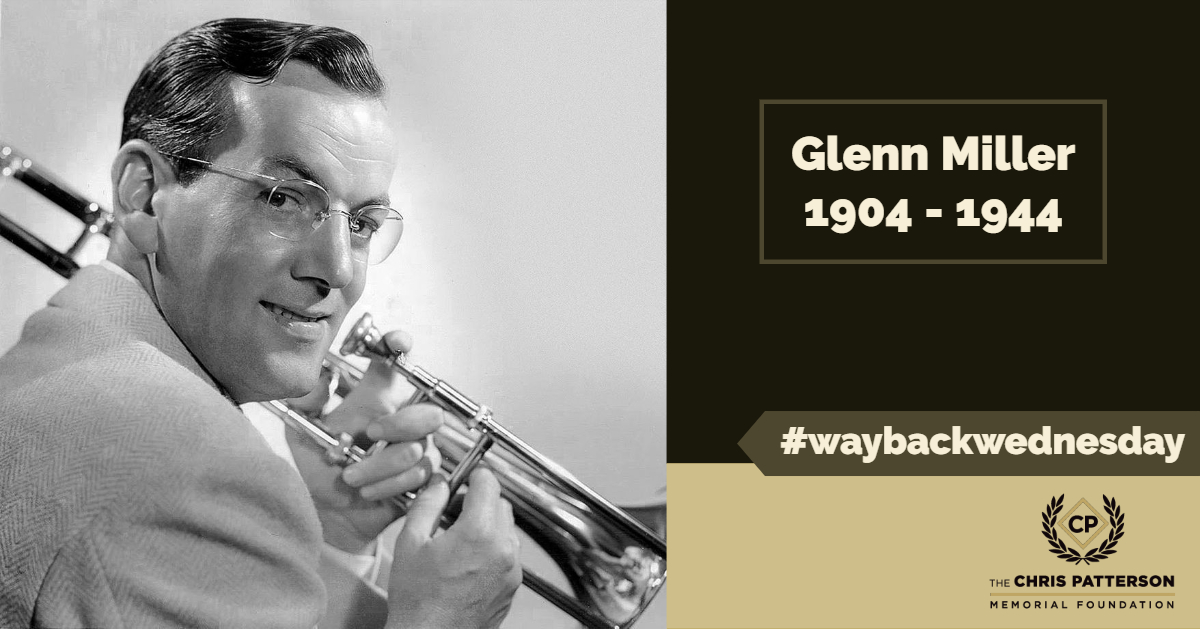Wayback Wednesday is a weekly series featuring historical figures with a record of military service and a connection to the arts.

This week features big-band leader, Glenn Miller.
When Glenn Miller broke through onto the music scene in 1938, he was already 34 years old and had spent years on the big band circuit without achieving the success he craved. Finally having landed on a unique sound and assembled the right band members to deliver on his arrangements, his Glenn Miller Orchestra landed a new contract with Bluebird Recording and was able to book a series of prominent live shows. To say they became famous is an understatement; between 1939 and 1942, Miller would log 17 number one records and 59 top ten hits. For those keeping score at home, the Beatles had 33 top ten hits, and Elvis Presley had 38. In 1942, however, Miller was determined to set aside his hard won fame and contribute to the war effort. At the peak of his fame and earning between $15,000 to $20,000 per week, which would still be pretty fantastic in 2019, Miller first had to find a way to get into a then-hard-pressed military wary of more bad press.
At 38, Miller was too old to be drafted and so sought to volunteer his services. He first offered his services to the Navy, who turned him down. Changing tack, he wrote to Army Brigadier General Charles Young and asked to “be placed in charge of a modernized army band.” On October 8, 1942 he reported for duty in Omaha, NE for service with the Seventh Service Command in the Army Specialist Corps. Miller quickly set to work revolutionizing the army band, with his fame and the war effort paving the way past unhappy traditionalists. Based in New Haven, CT and then New York City, Miller and his band performed a weekly radio broadcast entitled I Sustain the Wings. In 1944 he won permission to form his 50 piece Army Air Force band and take it to England, where they gave over 800 performances. While there, Miller and his band recorded a series of their songs in German for use on propaganda broadcasts.
On December 15th, 1944 Miller boarded a small plane headed for Paris, scouting ahead as he planned for the City of Lights to be the next stop for his AAF band. Despite his distance from the front, Miller had had his close calls already. After a bomb landed within three blocks of his offices in London he was persuaded to relocate, as it does not do to have the enemy blow up your morale effort. The day after leaving, a V-1 flying bomb struck the building, killing 70. Now, with bad weather closing in, Miller’s flight disappeared over the channel. Wreckage was never found, leading to years of conspiracy theories. The UC-64 Norseman he had been flying aboard had a carburetor that was notorious for icing up in cold weather. He was 40 years old, and left behind a wife and two adopted children. They accepted the posthumously awarded Bronze Star on his behalf.
Miller’s musical work continued to have an impact down through the years, often inspiring (and being imitated by) other artists. Former band members formed a ghost band, dedicated to performing Miller’s work. After a few fits and starts, with disagreements between former band members, in 1956 an official ghost band ‘stuck.’ The band is still touring the United States today, a testament to Miller’s lasting popularity and enduring musical contributions. While Miller’s AAF Band was disbanded in 1945, its influence can be felt throughout the armed forces to this day. After WWII, most branches added a jazz band to their concert and marching bands. Music remains an important part of the American military tradition to this day. Miller would have had it no other way, stating in one of the propaganda recordings that, “America means freedom and there’s no expression of freedom quite so sincere as music.”